Group shots were off the agenda, so here’s my twist Presenting the Class of 2020!
STT 10
John Garbutt – Cooper’s Hawk
A couple of winters previous, I discovered a large nest at one of the local parks. I believed it to be a hawk’s nest based on size and I had… Read More →
Paul Napper – Vertebrae found near the battery.
It was something I’d never seen and it still had a little hide and a section of the vertebrae attached. HOW COOL IS THAT! Some research told me it was a skunk.
Deborah Canterbury – Dedication Behind the Curtain
See those two faces in the back of this class photo? The ones with arrows above their heads? Well, they are still in the back row, so to speak, taking care of the tribe by posting and creating.
Dick Zartler – BPRC Turkey Vultures
While inspecting the status of the BPRC’s recently burned meadows (doing very well, thank you), came upon these.
Nancy Taylor – Wasps Love Cicadas to Death
When I first saw her noticeable behavior pattern, I went quickly to get my camera. She kept digging, moving out small clumps of dirt, then backing out. I watched as she repeated the process.


